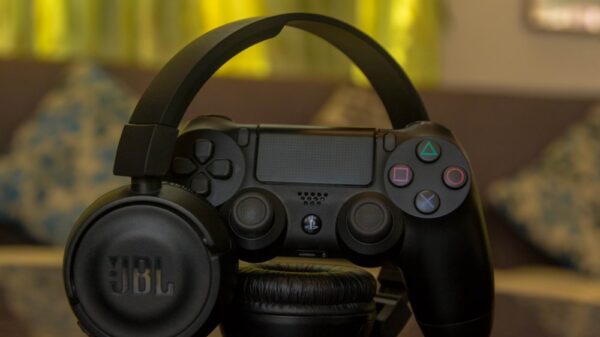
While gaming soundtracks often go unnoticed as gamers make their way through the virtual worlds on their screens, most gamers can remember at least one game where the sound design stood out to them. Maybe it was the mainstream music in Bioshock Infinite that left an impression on them or the orchestral tunes that accompanied Link as he made his way through Hyrule in the Legend of Zelda series.
When done right, a soundtrack can make a game, turning the ordinary into something extraordinary. While we often credit a game’s visuals with drawing us into its universe, without the accompanying soundtrack, a big part of the experience would be missing. This is true whether you play casual puzzle games or spend hours grinding in an RPG. In this article, we look at how gaming soundtracks have gone from being simple tunes to full-on scores that shape our gaming experience.
The Role of Sound in Early Gaming
Back in the early days, video games were known for their simple chiptunes that consisted of repetitive beeps and synthesized melodies. While they weren’t anything to write home about, these basic tunes became the face of some of the most iconic games in the history of gaming. All we have to do is think back to Super Mario Bros. and The Legend of Zelda, whose simple soundtracks almost all serious gamers know by heart. While the melodies in these games were basic (sound designers had to work with the technology at their disposal at the time), they were catchy and, above all, memorable. As technology progressed, the soundtracks of our favorite games became more complex, changing the gaming experience for the better.
Modern Gaming Soundtracks: Depth and Complexity

Gaming soundtracks have come a long way since the early days of gaming. While some soundtracks boast orchestral scores that could rival the grandeur of Hollywood films, others are more basic but still result in an immersive gaming experience. Casual games often rely on soundtracks that are less developed than what’s found in other gaming genres.
Let’s take online casinos, for example. In order to recreate the atmosphere of a casino floor in a virtual setting, these virtual platforms employ sound to create a sense of realism. From the time a player steps through the virtual casino doors until they sit down to spin the reel of online slots, music and sound effects create the familiar ambiance of a physical casino. The slots themselves also have their own distinct sounds based on their theme and to signal things like bonus rounds.
Moving away from the casino floor, in other video game genres, we also see sound shaping the gaming experience. Technology has advanced to the point where composers can integrate full orchestras, surround sound, and adaptive music systems into their work. Soundtracks can change in real time based on a player’s reactions and what’s happening in a game. One of the best examples of this is in the combat sequences from The Last of US or while a player is out exploring the frontier in Red Dead Redemption.
How Soundtracks Enhance Emotional Engagement
While we may not think about the emotional pull music can have on us in video games, if we think back to moments in our own lives, we can see how powerful music can be in making us feel connected to a certain time or recall certain feelings. For most of us, there are certain songs that mark the best moments in our lives and others that remind us of our difficulties. Gaming soundtracks set out to do the same, with music connecting us to the highs and lows of the virtual worlds we traverse.
In games like Journey or Ori and the Blind Forest, the music is an emotional guide for players. When the gamer succeeds at something, the music celebrates along with them, and when there’s sadness or tension, the music reflects those feelings back to the player. Composers like Austin Wintory and Gustavo Santaolalla have taken this even further, creating soundtracks that many consider to be stories in their own right.
